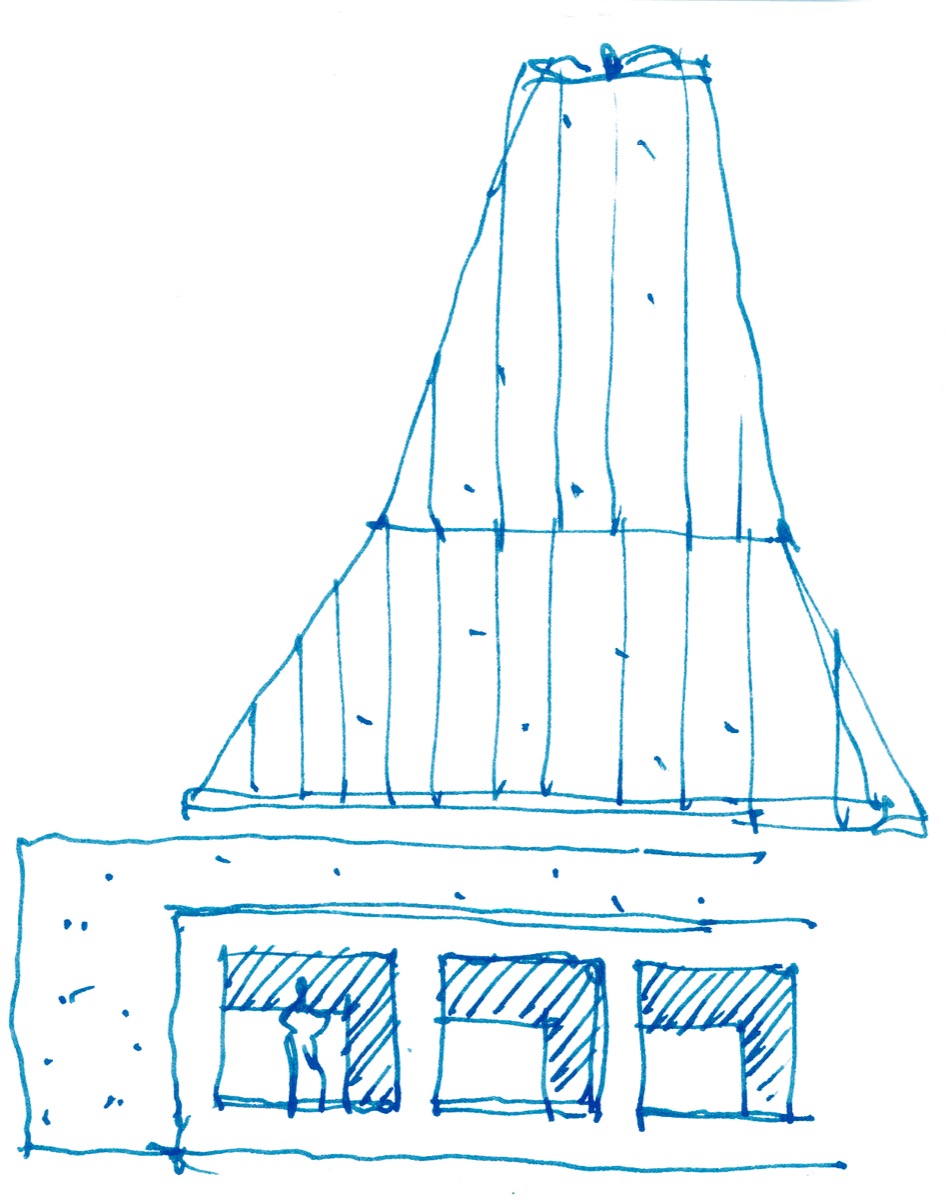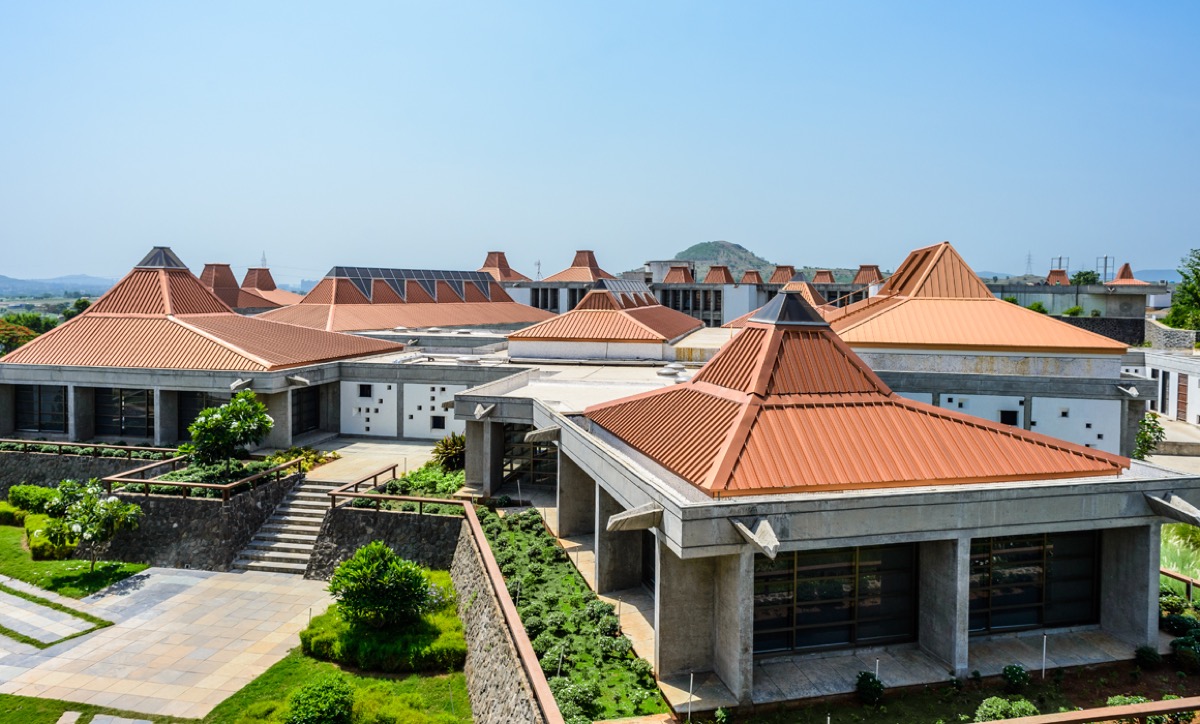
The Kirloskar group of industries is one of the oldest family owned industrial establishments in Western India. Over the past two decades they have transformed into a cluster of global companies requiring new strategies and production processes. They aim to create an appropriate managerial style, suitable to this new business environment, and hence promoted the Kirloskar Institute of Advanced Management Studies.

Located on the periphery of the Pune metropolitan region, the site slopes down the hills of the Sahyadhri mountain range, from a major arterial road. The sloping elevation, from this higher entry point, was exploited to break the fabric of the campus into descending terraces that structure the built fabric into a long stepped section.
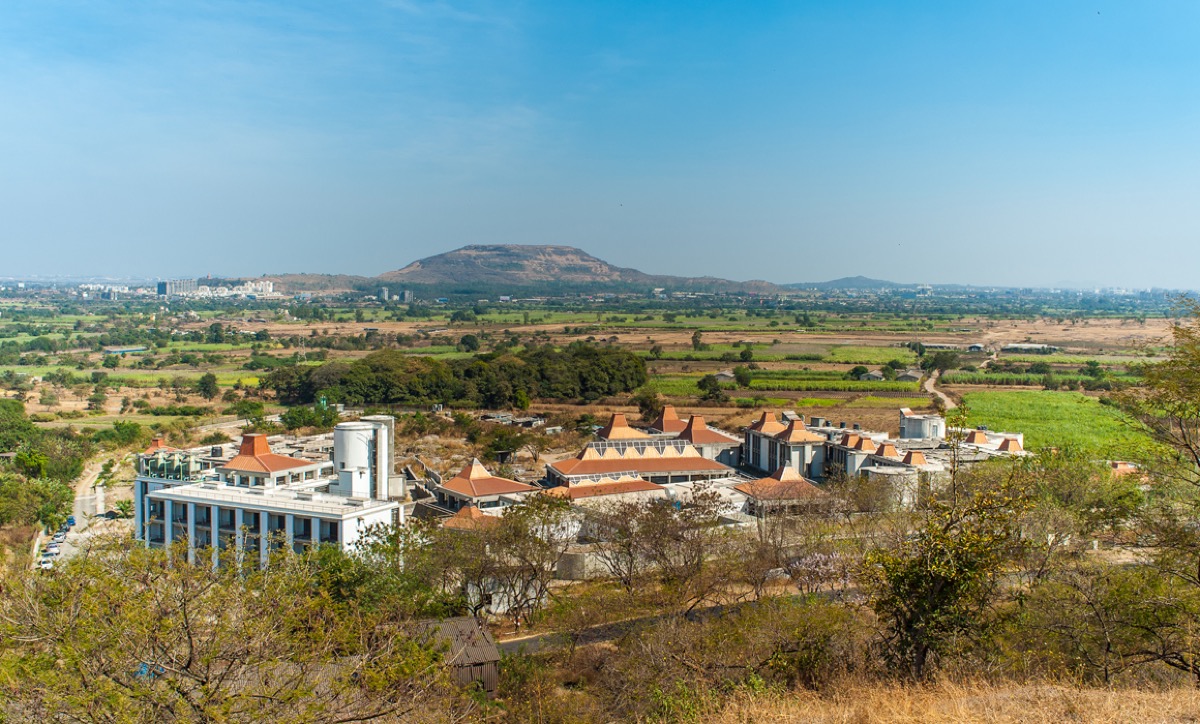
The clients’ requirements included three basic functions, further articulating the stepped terraces into specialized parts. These three major parts are the Academic Area; the Residential Area; and the Dining and Recreation area.
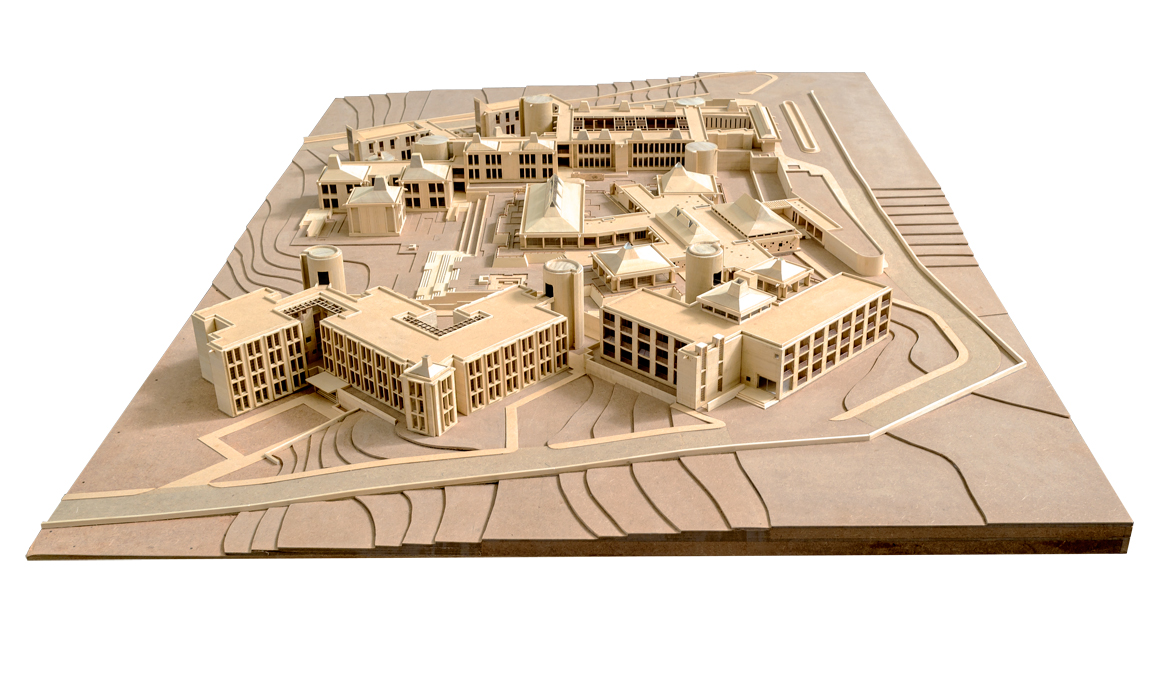 Model
Model
The strategy of the design was to encircle the site with a vehicular service road on the edge, off of which parking nodes were located so that no one would walk across moving traffic. This would create a buffer from nearby sites, allow utility and emergency vehicles easy access, and leave the long sloping interior as a dedicated central pedestrian garden.

Further it was decided to keep the academic functions near the entry, and step these down the hill on one side of the elongated, slopping plot, with the formal entry and the Administration Building at the top. From here a series of courtyards step down onto subsequent lower terraces, and each terrace is devoted to a core function focused around a courtyard. The entry and the administration were kept at the top; mid-career executive training on the next lower terrace courtyard; masters in business administration, first and second years, on the next two lower level terraces, and the library at the lowest terrace. In each of these courtyards, one side is devoted to faculty offices and the other to classrooms. Thus, the lower floor at the higher courtyard becomes the upper floor in the next lower courtyard.
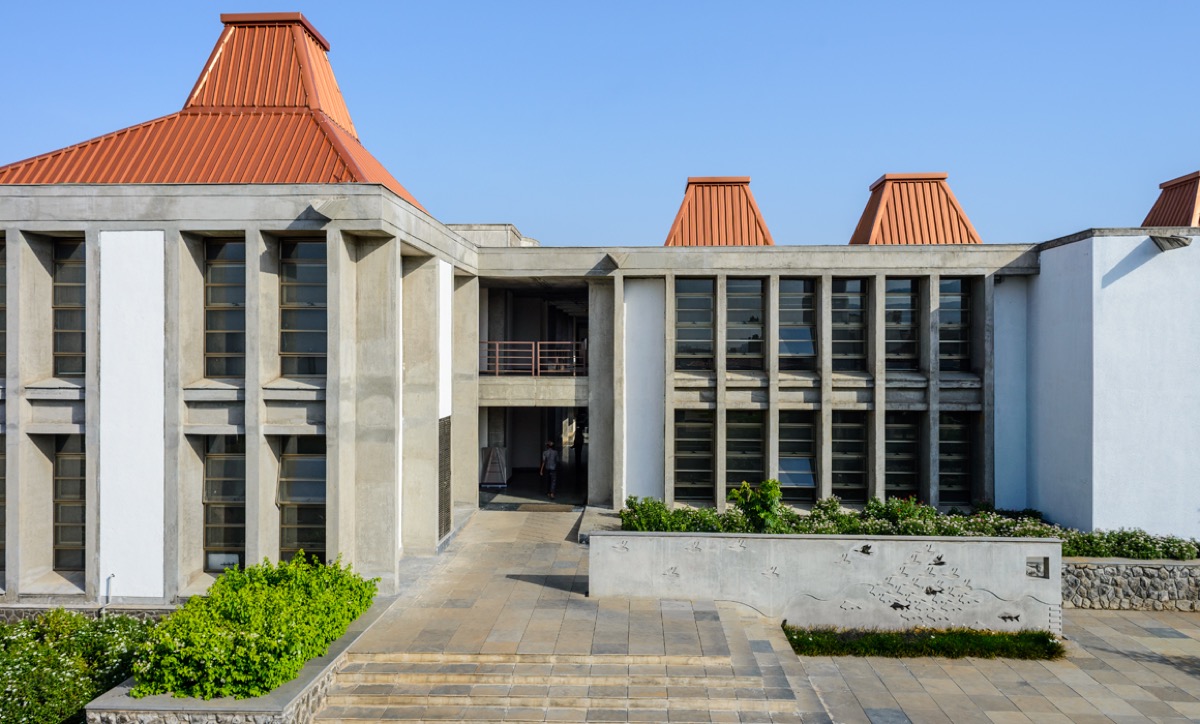
On the other side of the site the residential area begins with an residential entry for executive management candidates on the higher terrace, and subsequent dropping terraces dedicated to accommodate postgraduate student hostels and commons areas, in clusters, from one higher level down to the next lower level, on down the hill, reaching a recreational area at the lower end. This recreation area has changing areas, a swimming pool, and multi-purpose halls for yoga and a gym. These are near tennis courts and other out-of-doors sports areas, at the lower end of the site where a water collection pond and cisterns store rainwater.
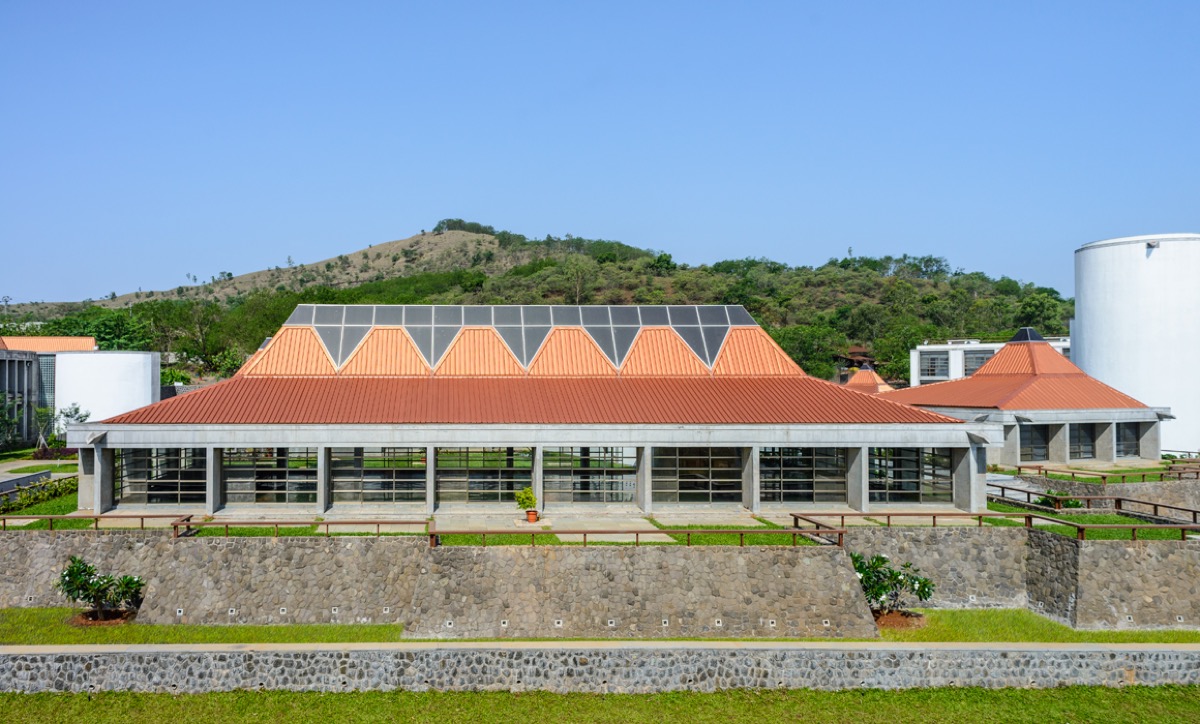
Set at the top of the hill between the entry-administration, and the executive hostels, is the extensive catering facility with kitchens off the service road, a server, and four dining halls opening onto terraces, affording views into the distant valleys and mountains. These views run down a central garden mall to the recreation facilities at the lower end of the site.
The materials language is that of exposed concrete structural components, white rough plaster on brick infill walls, natural Kota Stone floors and sloped copper aluminium roofs, mirroring the mountainous terrain.
Like the Centre for Development Studies and Activities, the Mahindra United World College and the YMCA Camp Site this composition is conceived as a vast, green landscape, bringing in the borrowed, dramatic landscapes from afar. Up close there are gentle steps, ramps, and natural stone walls and walls with cast mural reliefs in them.

